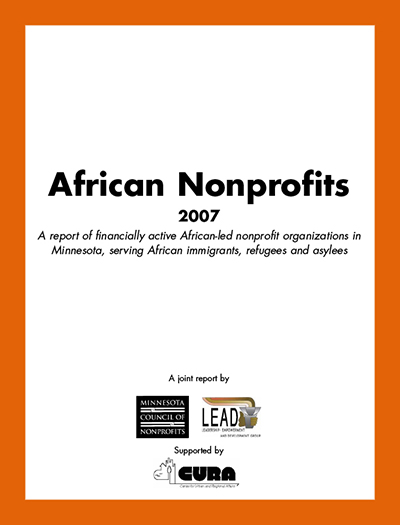The African Nonprofit Economy Report was published in 2007 to investigate the scope and impact of financially active African-led nonprofit organizations in Minnesota whose primary mission is to serve African immigrants, refugees, and asylees.
Executive Summary
Minnesota’s African population has seen more than a threefold increase since 2000, including representation from more than 45 nationalities. As this African population has grown, so too has the number of African-led nonprofit organizations in Minnesota, many of which have been organized to provide key services to immigrants, refugees, and asylees.
Of the 18 organizations that returned surveys, a majority were formed between 2000 and 2006 and are situated in the Twin Cities metro area. All 18 organizations could be described as multi-service, as opposed to focusing on a single type of activity. Several African nationalities are represented in the clientele of these organizations, which offer written and spoken translation services incorporating a wide range of African languages and dialects. All 18 nonprofits also engage in some form of collaborative and referral process.

In terms of financial activity, 77 percent of the organizations’ combined total revenue in 2005 came from charitable contributions, gifts, and grants, and 50 percent of expenses were for salaries, other employee compensations, and employee benefits.
The greatest challenge reported by the executive directors of these organizations was obtaining sufficient funds to sustain their organization’s presence and growth. Executive directors also expressed a need for training specifically focused on grantwriting, financial management, leadership development, program planning and evaluation, networking skills, and cultural competency to improve the growth of their nonprofit organizations.
African-led nonprofits provide a vital connection and source of information and advocacy for Minnesota’s African communities. As the number of African immigrants, refugees, and asylees has grown, community demands for services and support has also grown, often stretching these organizations beyond available resources. This report concludes with recommendations for funders, nonprofits, and future research in this area in advancing Minnesota’s African nonprofit sector.